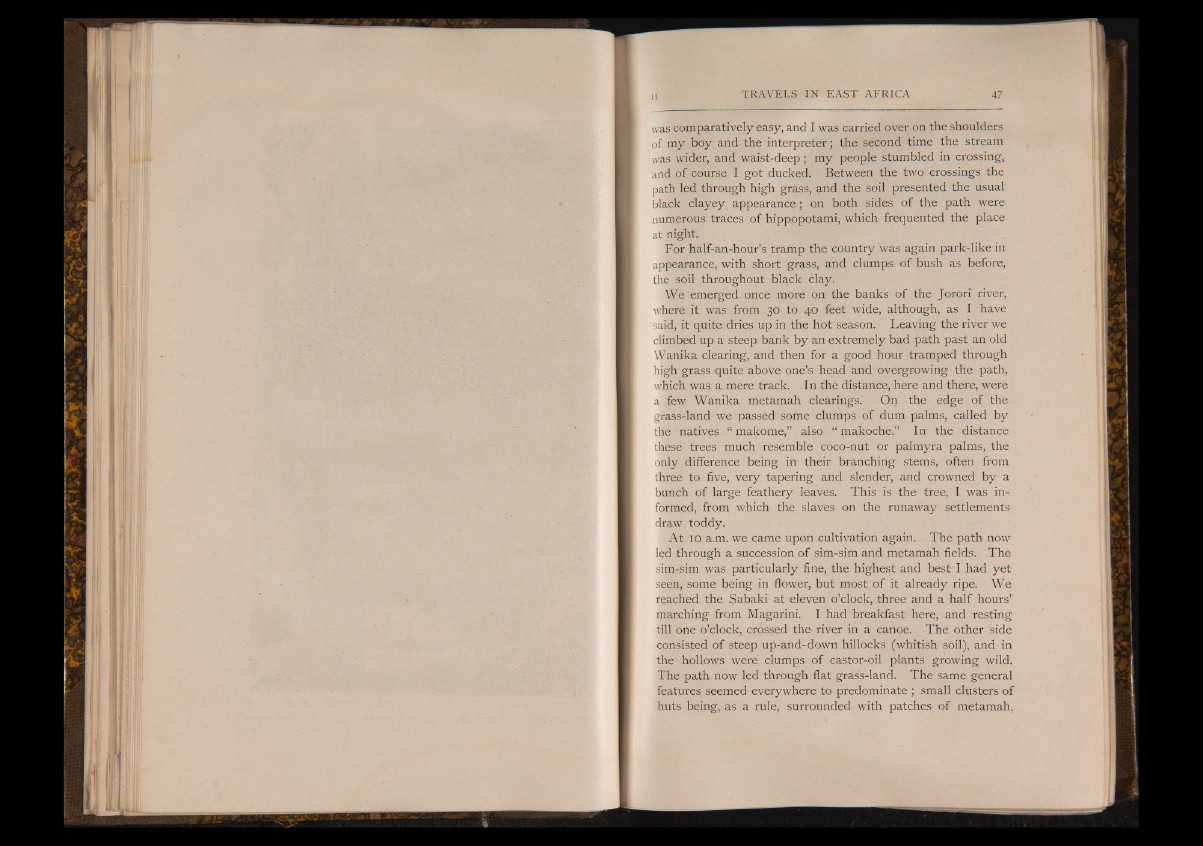
was comparatively easy, and I was carried over on the shoulders
of my boy and the interpreter; the second time the stream
was wider, and waist-deep; my people stumbled in crossing,
and of course I got ducked. Between the two crossings the
path led through high grass, and the soil presented the usual
black clayey appearance; on both sides of the path were
numerous traces of hippopotami, which frequented the place
at night.
For half-an-hour’s tramp the country 'was again park-like in
appearance, with short grass, and clumps of bush as before,
the soil throughout black clay.
We emerged once more on the banks of the Jorori river,
where it was from 30 to 40 feet wide, although, as I have
said, it quite dries up in the hot season. Leaving the river we
climbed up a steep bank by an extremely bad path past an old
Wanika clearing, and then for a good hour tramped through
high grass quite above one’s head and overgrowing the path,
which was a, mere track. In the distance, here and there, were
a few Wanika metamah clearings. On the edge of the
grass-land we passed some clumps of dum palms, called by
the natives 1 makome,” also “ makoche.” In the distance
these trees much resemble coco-nut or palmyra palms, the
only difference being in their branching stems, often from
three to five, very tapering and slender, and crowned by a
bunch of large feathery leaves. This is the tree, I was informed,
from which the slaves on the runaway settlements
draw toddy.
A t 10 a.m. we came upon cultivation again. The path now
led through a succession of sim-sim and metamah fields. The
sim-sim was particularly fine, the highest and best I had yet
seen, some being in flower, but most of it already ripe. We
reached the Sabaki at eleven o’clock, three and a half hours’
marching from Magarini. I had breakfast here, and resting
till one o’clock, crossed the river in a canoe. The other side
consisted of steep up-and-down hillocks (whitish soil), and in
the hollows were clumps of castor-oil plants growing wild.
The path now led through flat grass-land. The same general
features seemed everywhere to predominate ; small clusters of
huts being, as a rule, surrounded with patches of metamah,